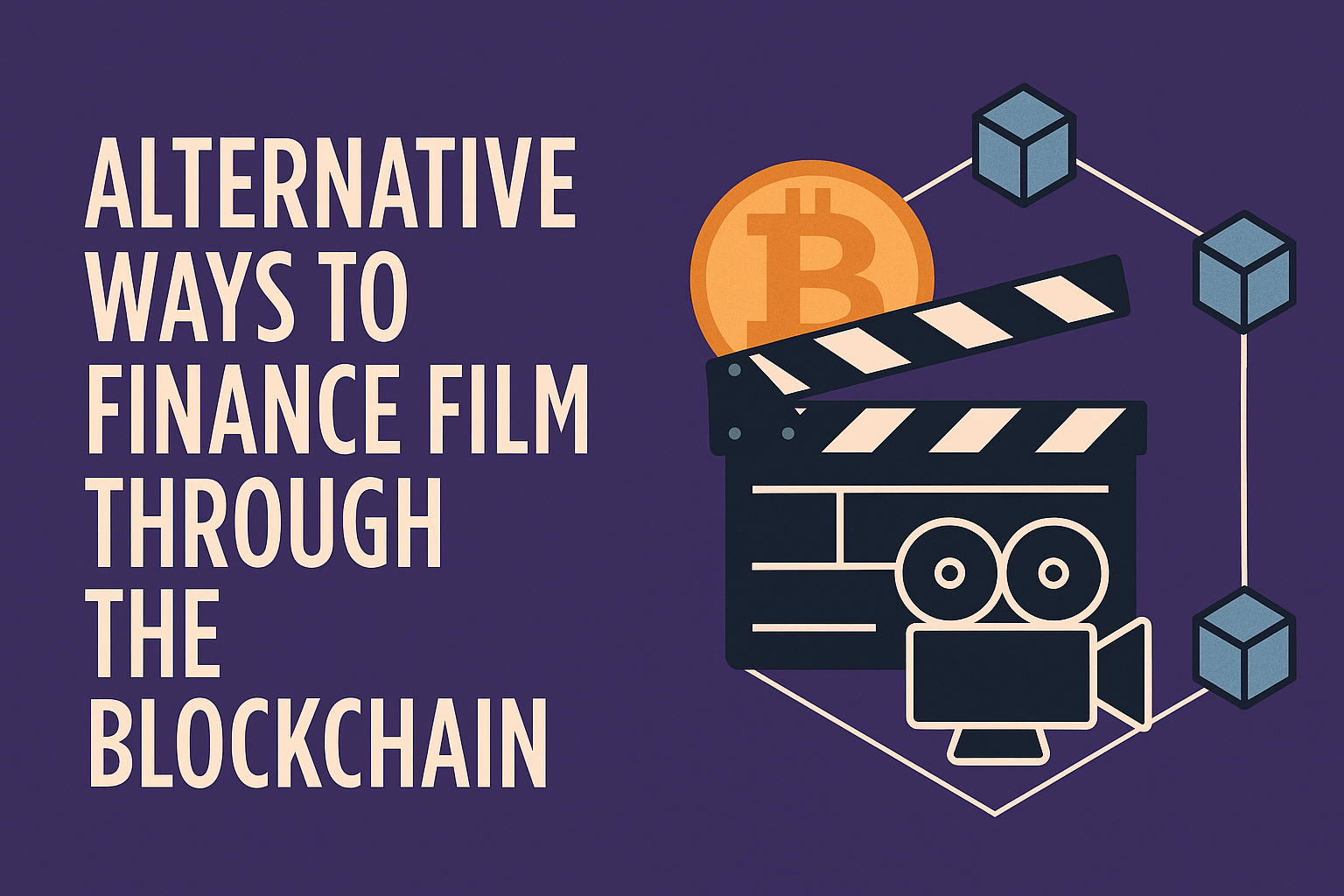Unlike any other technology, blockchain provides creators, investors, and audiences with innovative and seamless connectivity in film financing. With blockchain, creators can utilize new financing tutorial technologies such as tokenized film shares, NFTs, and DAOs.
Smart contracts even allow film producers to facilitate legal agreements. With no gatekeepers, independant film producers can raise money from any audience.
Because of the technology’s revenue-boosting capabilities, creators can afford to allow net participations of audiences in film projects. Blockchain film financing is inclusive and effective.
Key Point
| Concept | Key Point / Explanation |
|---|---|
| Tokenized Film Shares | Films are divided into digital tokens representing fractional ownership, allowing investors to buy and trade film shares transparently. |
| NFT-Based Crowdfunding | Filmmakers raise funds by selling NFTs that grant perks such as early access, exclusive content, or profit participation. |
| Decentralized Film DAOs | Community-led organizations where token holders vote on funding, production, and distribution decisions for films. |
| Smart Contract Revenue Sharing | Automates profit distribution to investors, creators, and crew based on predefined rules coded into smart contracts. |
| Stablecoin-Based Film Financing | Uses stablecoins to fund production and pay crew, reducing volatility risks compared to traditional crypto assets. |
| Crypto Film Grants & Competitions | Blockchain foundations and DAOs sponsor film projects through grant programs or decentralized contests. |
| Blockchain Streaming & Pay-per-View | Enables direct-to-viewer distribution with transparent micro-payments using blockchain-based streaming platforms. |
| Royalties Tokenization | Converts royalty rights into tradeable tokens, allowing investors to buy a share of future film earnings. |
| Fan Investment Platforms | Fans invest directly in films using crypto, earning rewards or a share of profits as stakeholders. |
| Metaverse Film Experience Sales | Virtual film screenings, collectibles, and interactive experiences sold within metaverse platforms for added revenue. |
1. Tokenized Film Shares
Tokenized film shares provides each film’s ownership dematerialized into digital tokens. This enables global investors to purchase fractional shares in films. This shift alleviates the reliance of filmmakers on traditional studios. Instead, they can turn to the liquidity and transparency of blockchain technology.

Investors can also profit from the success of the film since they can trade their shares on secondary markets. For more funded filmmakers, combining this approach with NFT-based crowdfunding or decentralized film DAOs provides investors with voting rights. This approach creates a more collaborative film ecosystem.
Tokenized Film Shares Pros & Cons
Pros:
- Makes it possible for people around the world to take part as owners in shares.
- Greater investment transparency and traceability.
- Offers secondary token trading to provide liquidity.
- Lowers reliance for funding on traditional film studios.
Cons:
- Regulatory ambiguity concerning tokenized securities.
- Lengthy and sophisticated legal and financial workaround.
- Token value can be adversely affected by market depreciation.
- The traditional investors have the least understanding.
2. NFT-Based Crowdfunding
With NFT-based crowdfunding, filmmakers can mint unique digital assets representing exclusive perks. Supporters can purchase these NFTs, which hehttps://coinroop.com/how-to-determine-x-amount-in-crypto-simple-calculation-guide/lps fund production. For collectors, these tokens also provide profit participation. All expenses and funds raised can be tracked on the blockchain, which eliminates the need for trust.

For creators who wish to be even more supportive of their fans, creative integration of tokenized film shares, crowdfunded NFTs, and smart contract revenue sharing can provide the creators with both the financing and the NFT for the intended creative payoff.
NFT Based Crowdfunding Pros & Cons
Pros:
- Strong fan engagement and loyalty.
- Fulfills needs for independent films early-stage funding.
- Continuous income is offered via NFT resale royalties.
- Blockchain transparency improves the way fundraising is done.
Cons:
- NFT price volatility is driven by market trends.
- Supporters need to be driven through active marketing.
- Mainstream investors are not attracted to this.
- Unclear legal framework surrounding NFT ownership.
3. Decentralized Film DAOs
With Decentralized Film DAOs (Decentralized Autonomous Organizations), groups of investors, film creators, and audiences can collaboratively finance and manage relevant film projects. Community members use governance tokens to cast votes on the movies that are financed, the distribution of the film, and the budgets.

This democratic approach shifts the norm of centrally controlled studios to one of transparency and equitable control through the blockchain.
DAOs may also implement NFT-based crowdfunding or tokenized shares of the film, providing DAOs with both governance and participatory financial models. Community-supported filmmaking can now involve equitable governance and shared stakes on the creative product with the new hybrid system.
Decentralized Film DAOs Pros & Cons
Pros:
- Democratic governance among film supporters.
- Transparent and accountable decision-making and distribution of the funds.
- Holders decide on the projects to work on based on the community.
- Token holder distribution of profits.
Cons:
- Slow and complex DAO management.
- Large token holders can manipulate the votes.
- Success requires high community engagement.
- Evolving legal recognition of DAOs.
4. Smart Contract Revenue Sharing
Once particular financial conditions are satisfied, smart contracts facilitate the automatic distribution of profits. This instantaneous and transparent profit distribution allows all relevant actors in the film industry to accurately account for their earnings, including the filmmakers, investors, and crew.

Eliminating middlemen reduces the likelihood of disputes. With secured inter DAC (Decentralized Autonomous Corporation) NFT-based film investment and smart contracts, funds and profits can be seamlessly integrated to eliminate bottlenecks in film project financing.
Moreover, smart contracts can be combined with stablecoins, granting all chain actors in the film industry bordered equitable real-time payment for their services.
Smart Contract Revenue Sharing Pros & Cons
Pros:
- Transparent automated profit distribution.
- Eliminating intermediaries and agents.
- Payment delays and disputes won’t arise.
- Trust from unchangeable logic on chain.
Cons:
- Losses fueled by irreplaceable coding errors.
- Requiring expertise unnecessarily adds friction.
- Once on-chain, there’s no flexibility.
- Automating a process may lead to legal disputes.
5. Stablecoin-Based Film Financing
Stablecoin-based film financing uses cryptocurrencies pegged to fiat currencies (like USDT or USDC) to fund production, pay staff, and handle global transactions with minimal volatility.
This ensures predictable budgeting and fast, low-cost transfers, especially for international collaborations.

Alternatively, filmmakers can integrate stablecoin payments with smart contract revenue sharing or decentralized DAOs for greater automation and accountability.
The use of stablecoins bridges traditional finance with blockchain benefits, making digital funding more reliable, secure, and adaptable to film industry needs.
Film Financing with Stablecoins Pros & Cons
Pros:
- Protect financing from losses due to crypto volatility.
- Fast and borderless payments to crew and vendors.
- Budgeting is easier due to predictable currency value.
- Access to traditional finance from crypto.
Cons:
- Issuer of the stablecoin may have issues.
- During audits, issues arise with centralized stablecoins.
- Compared to volatile tokens, the overall crypto value may drop.
- Stablecoins may not be accepted by all partners and vendors.
6. Crypto Film Grants & Competitions
Crypto film grants and competitions are decentralized funding initiatives where blockchain foundations, DAOs, or crypto communities sponsor filmmakers through on-chain voting or contests.

Winning projects receive funds in cryptocurrencies or stablecoins, ensuring transparency and speed in allocation. Alternatively, participants can combine this model with NFT-based crowdfunding or fan investment platforms to extend financial reach.
These decentralized programs democratize access to capital, reward innovation, and connect filmmakers directly with global supporters passionate about blockchain-enabled creative projects.
Competitions and Grants for Filmmakers Pros & Cons
Pros:
- Funding is easier to come by for independent creators.
- Filmmaking is fueled by innovative and experimental ideas.
- Filmmakers can reach the new audiences of blockchain ecosystems.
- Grants are allocated transparently with smart contracts.
Cons:
- Grants are few relative to the number of recipients.
- External DAO or foundation approval is not a guarantee.
- Grants can be affected by volatility of crypto.
- Proposal and approve logic can be very tedious.
7. Blockchain Streaming & Pay-per-View
With blockchain technology, streaming platforms decentralize the distribution of films, allowing viewers to pay creators directly with crypto. This innovation removes intermediaries and provides instantaneous and decisive payment of royalties through smart contracts.

Additionally, the hybrid monetization strategy, with royalties being tokenized and content access passes being NFTs, will accommodate blockchain streaming.
This technology will embolden independent filmmakers, as they will maximize profit and audience reach without centralized streaming platforms, opaque royalties, and self-censorship.
Pay-Per-View and Blockchain Streaming Pros & Cons
Pros:
- Filmmakers can distribute directly to viewers, no intermediaries are required.
- Filmmakers are paid instantly, no waiting.
- Prevents piracy through blockchain authentication.
- Provides a clear picture of views and earnings.
Cons:
- Streaming apps on blockchain are not widely adopted.
- Users must understand and manage crypto wallets.
- Transfer costs are exorbitant on some networks.
- Competing against the monopolies of the streaming industry.
8. Royalties Tokenization
Royalties tokenization provides the ability to convert revenue streams from future films into tradable digital assets. This means that spectators can purchase shares of films and revenues, and enjoy the liquidity and transparency that comes with blockchain technology.

Filmmakers, along with smart contracts, pivoting revenue sharing and tokenized film shares provides on-chain comprehensive film financing.
Royalties tokenization provides filmmakers access to a new pool of investors, while simultaneously converting stagnant, long-term rights into blockchain assets that are flexible.
Royalties Tokenization Pros & Cons
Pros:
- Future earnings become securitized and transferrable.
- Long-term royalty holders can freely dispose of their assets.
- Royalties and earnings tracking neatly reconciled.
- Additional passive income attracts new funds.
Cons:
- Future royalties streams are difficult to assess.
- Contracts and the law prevent owners from selling rights.
- Ties to off or on the shelf royalties and low demand.
- Income tokens are cash equivalent and attract the IRS.
9. Fan Investment Platforms
Fan investment platforms allow audiences to use blockchain technology to directly finance films. Fans get to invest in storylines and earn returns over box office and streaming performance.

These platforms can also use crowdfunding through NFTs and DAOs for governance. With blockchain technology, investment and fandom can create closed community models and allow audience audiences to become real shareholders in a film’s success.
Fan Investment Platforms Pros & Cons
Pros:
- Lets audiences fund the film directly.
- Fosters community loyalty and bank-ability.
- Encourages transparent micromanagement.
- Lets lower tier investors share in the films.
Cons:
- Will fans come with enough marketing push?
- Laws limit the amount of film profit retail investors can access.
- Investors can have high expectations.
- Profit splits must be balanced to attract investments.
10. Metaverse Film Experience Sales
The metaverse gives filmmakers space to sell virtual film experiences, like immersive screenings and interactive storytelling. These experiences can be tied to film and metaverse NFTs for added monetization.

Users spend cryptocurrency or NFTs to buy tickets and exclusive digital assets. These experiences can also be tied to tokenized film shares and film streaming on blockchain technology.
Metaverse film sales change audience participation from passive to active investment in a a digital entertainment ecosystem.
Metaverse Film Experience Sales Pros & Cons
Pros:
- Enables virtual screenings to generate new revenue channels.
- Offers new ways to engage audiences with immersive storytelling.
- Uses NFT ticketing and other collectibles.
- Provides global access to films outside of physical cinema.
Cons:
- Investment in advanced technology and creativity is very high.
- The Metaverse is still in the early stages of adoption.
- The required hardware (VR/AR gear) limits entry.
- The long-term profitability of the Metaverse is still uncertain.
Conclusion
The introduction of new financing models that are decentralized, clear, and globally accessible are innovations of blockchain technology in the film industry.
Filmmakers are now able to secure financing and connect with fans and investors directly, with no need for the traditional studio systems, thanks to tokenized film shares, NFT crowdfundings, and decentralized film DAOs.
The financing made possible with stablecoins and crypto grants, together with smart contracts for automated revenue sharing, provide financial inclusivity, tokenizing royalties and blockchain streaming, and film experiences in the metaverse offer new monetization opportunities outside of traditional means.
The ability to finance films with blockchain technology fosters trust, financial independence, and makes financing accessible to all parts of the world for film makers.
FAQ
What does blockchain-based film financing mean?
Blockchain-based film financing refers to using decentralized technologies like cryptocurrencies, smart contracts, and tokenization to fund, manage, and distribute films. It replaces traditional studio or bank-driven financing with transparent, global, and community-supported systems.
How can tokenized film shares help filmmakers?
Tokenized film shares allow filmmakers to divide film ownership into digital tokens. Investors worldwide can buy these tokens, gaining fractional ownership and potential profit participation—making film investment more accessible and liquid.
What are NFT-based crowdfunding campaigns?
NFT-based crowdfunding lets filmmakers raise funds by selling NFTs tied to exclusive perks, early access, or profit-sharing rights. It merges fan engagement with investment, turning supporters into active contributors to a film’s success.
What is a Decentralized Film DAO?
A Decentralized Film DAO is a blockchain-based community where members vote on film projects, funding decisions, and creative directions using governance tokens. It ensures transparency and collective participation in filmmaking.
How do smart contracts simplify film revenue sharing?
Smart contracts automatically distribute profits among investors, cast, and crew based on pre-set conditions. This eliminates intermediaries, reduces disputes, and ensures instant, transparent payments.
Why use stablecoins for film financing?
Stablecoins (cryptocurrencies pegged to fiat currencies) provide financial stability, fast global payments, and reduced volatility—making them ideal for international film productions and secure budgeting.









